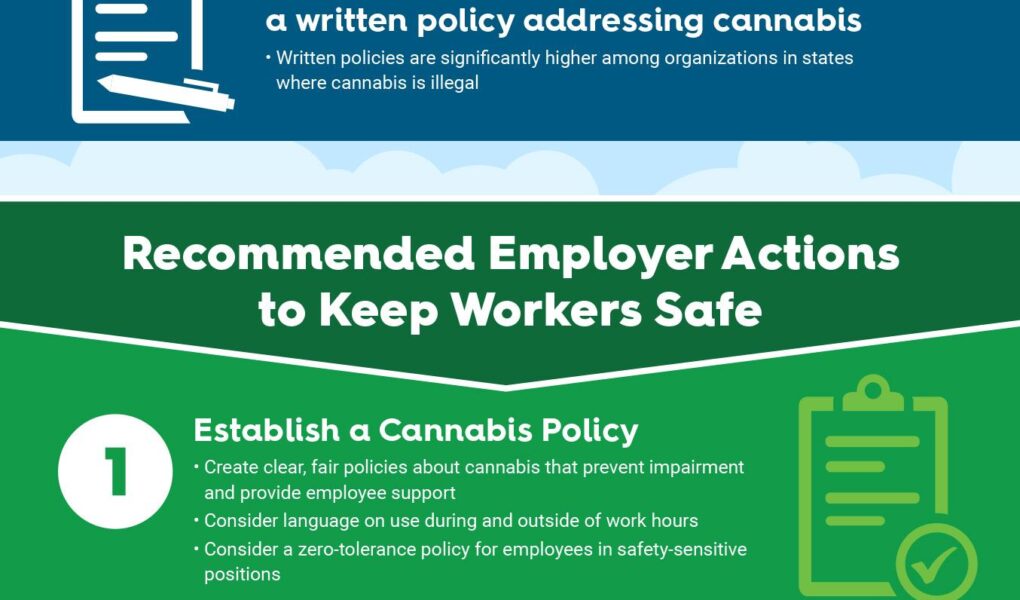As the conversation around cannabis continues to evolve, many are left pondering a fundamental question: Is smoking weed safe? Once relegated to the fringes of society, marijuana has stepped into the limelight, embraced by advocates for its medicinal properties and recreational pleasures alike. Yet, as with any substance that alters our state of mind, safety is a crucial concern. This exploration delves into the multifaceted world of cannabis, examining its effects on health, mental clarity, and social dynamics. We will navigate through scientific studies, personal anecdotes, and cultural attitudes to uncover the nuanced truth behind this age-old herb and its place in our modern lives. Join us as we sift through the smoke screens of misinformation and seek clarity on the safety of smoking weed in today’s society.
Table of Contents
- Understanding the Health Implications of Cannabis Use
- Exploring the Psychological Effects of Marijuana Consumption
- Navigating Legal and Social Considerations Surrounding Cannabis
- Practical Tips for Responsible Use and Harm Reduction
- Q&A
- Key Takeaways
Understanding the Health Implications of Cannabis Use
The use of cannabis has become a hotly debated topic in both health and wellness circles. While many individuals advocate for its therapeutic benefits, understanding the health implications is crucial. Cannabis impacts various bodily systems and may lead to both short-term and long-term effects. Some of these effects, particularly concerning lung health, may come as a surprise to casual users. When smoked, cannabis can expose the lungs to harmful substances similar to those found in tobacco smoke. This includes tar and other carcinogens, potentially leading to respiratory issues over time.
Moreover, the mental health impacts should not be underestimated. Regular cannabis use has been associated with various psychological effects, ranging from altered perception to anxiety and depression. It’s important to consider the frequency and context of use, as these can significantly influence outcomes. Here’s a quick look at some potential health effects associated with cannabis use:
| Health Impact | Potential Risk |
|---|---|
| Respiratory Issues | Possible chronic bronchitis |
| Mental Health | Anxiety, paranoia |
| Dependency | Risk of developing cannabis use disorder |
| Cognitive Function | Impaired short-term memory |
Understanding these implications can guide individuals in making informed decisions about cannabis consumption. Given the wide variability in personal reactions to cannabis, it’s advisable for users to reflect carefully on how it affects their health and wellbeing.
Exploring the Psychological Effects of Marijuana Consumption
Marijuana consumption can trigger a complex array of psychological responses that vary widely among individuals. Many users report feelings of relaxation and euphoria, which can be beneficial for those dealing with anxiety or stress. However, these effects can also lead to paranoia or heightened anxiety in some, underscoring the unpredictable nature of its impact on the mind. Navigating this labyrinth of emotions entails careful consideration of dosage, individual mental health history, and the environment in which consumption occurs.
The long-term psychological effects of marijuana use warrant attention as well. While some studies suggest potential therapeutic benefits, such as relief from depression and PTSD symptoms, others point to risks, particularly with heavy, prolonged usage. Users may experience cognitive impairments, affecting memory and attention, or develop dependence that can lead to withdrawal symptoms affecting mood and overall mental health. The following table summarizes various psychological effects associated with marijuana use:
| Effect | Positive Impact | Negative Impact |
|---|---|---|
| Relaxation | Can reduce stress and anxiety. | Possible onset of paranoia. |
| Euphoria | Enhances mood and social interactions. | May lead to heightened anxiety in certain contexts. |
| Cognitive Function | Potential therapeutic effects for some mental illnesses. | Risk of memory and attention issues. |
Navigating Legal and Social Considerations Surrounding Cannabis
As more regions legalize cannabis, both the legal landscape and societal attitudes are evolving. Understanding the complexities of cannabis legislation is crucial for users. The laws surrounding cannabis use can vary significantly from one jurisdiction to another, which means individuals must consider:
- Local Legislation: Always remain informed about the laws in your area regarding possession, consumption, and distribution.
- Regulation Compliance: Ensure compliance with regulations concerning dosage, labeling, and sales, especially in markets where cannabis is legal.
- Workplace Policies: Be aware of your employer’s stance on cannabis use, as it may affect aspects like job security and performance evaluations.
- Public Perception: Consider how smoking weed might be viewed in social settings and communities, as stigma can still exist.
Social considerations also play a significant role in the discourse surrounding cannabis usage. Engaging in open conversations can help normalize its use and dispel myths. Important factors include:
- Health Discussions: Advocate for ongoing research into the safety and health implications of cannabis consumption.
- Community Impact: Examine how cannabis legislation affects local economies and community dynamics.
- Education Initiatives: Support programs that educate individuals about responsible use and potential risks, promoting mindful consumption.
Practical Tips for Responsible Use and Harm Reduction
For those considering the use of cannabis, adopting a mindful approach can significantly enhance safety and enjoyment. Start by understanding your local laws regarding cannabis use, as legality varies widely across regions. Choosing a reliable source is crucial; opt for licensed dispensaries to ensure product quality and safety. Additionally, be aware of the strain and its potency—some strains may have higher levels of THC, which can lead to increased anxiety or adverse effects. A balanced approach includes:
- Educating yourself on different consumption methods (e.g., smoking, vaping, edibles) to find what suits you best.
- Moderating dosage: Start low and go slow, giving your body time to react.
- Staying hydrated: Cannabis can cause dry mouth, so drink plenty of water.
- Avoiding mixing with alcohol or other substances, as this can lead to unpredictable effects.
Additionally, it’s essential to create a safe environment when using cannabis. This includes avoiding activities like driving or operating heavy machinery after consumption. If using for medical purposes, consult with a healthcare professional to ensure alignment with your overall health plan. Incorporating a few guidelines can further minimize potential risks:
| Guideline | Purpose |
|---|---|
| Use in familiar settings | Reduces anxiety and increases comfort. |
| Have a sober friend | Provides support in case of adverse effects. |
| Avoid overindulgence | Prevents negative experiences, such as paranoia. |
Q&A
Q&A: Is Smoking Weed Safe?
Q1: What does the term “smoking weed” entail?
A1: Smoking weed typically refers to the inhalation of marijuana, which is made from the dried flowers and leaves of the Cannabis sativa plant. This practice can take various forms, such as using a joint, a pipe, or a bong, and it releases a host of psychoactive compounds, the most notable being THC (tetrahydrocannabinol).
Q2: What are some potential benefits of smoking weed?
A2: Proponents of marijuana use often highlight its potential benefits. These may include relief from chronic pain, reduced anxiety, enhanced mood, and stimulation of appetite, especially for individuals undergoing treatments like chemotherapy. Some studies have also suggested that certain compounds in cannabis may have neuroprotective properties. However, it’s essential to note that experiences can vary widely among individuals.
Q3: Are there any risks associated with smoking weed?
A3: Yes, smoking weed is not devoid of risks. Regular use may lead to respiratory issues akin to those caused by traditional tobacco smoking, such as chronic bronchitis and lung inflammation. Additionally, there are concerns surrounding mental health; studies indicate a potential link between heavy cannabis use and the onset of anxiety, depression, and in some cases, psychosis—especially for those with a predisposition to mental health disorders.
Q4: Does smoking weed affect everyone the same way?
A4: Not at all! The effects of smoking weed can vary greatly from person to person, influenced by factors such as dosage, individual tolerance, method of consumption, and even set and setting. While some may experience relaxation and euphoria, others may encounter anxiety or paranoia. Genetics and pre-existing health conditions further complicate the landscape, making it a highly personal experience.
Q5: Is marijuana safe for minors?
A5: The consensus among health professionals is that marijuana use is particularly concerning for adolescents. The teenage brain is still developing, and introducing psychoactive substances during this critical period may interfere with cognitive and emotional growth. Regular use has been associated with impaired memory, attention, and learning, making it advisable for minors to steer clear of smoking weed.
Q6: How is the legality of marijuana affecting safety concerns?
A6: The evolving legal landscape surrounding marijuana is a double-edged sword. Legalization in many regions may lead to safer, regulated products and provide users with access to accurate dosing information and safer consumption methods. However, it can also lead to increased use, particularly among vulnerable populations. Balancing regulation with public health education is crucial to promote informed choices.
Q7: How can someone minimize the risks if they choose to smoke weed?
A7: For those who decide to smoke weed, moderation is key. Starting with low-potency strains, waiting to gauge effects, and keeping consumption within reasonable limits can help mitigate potential negative outcomes. Opting for alternative consumption methods, such as edibles or vaporizers, may also lessen some risks associated with smoking. Always consider consulting with a healthcare professional, especially if you have pre-existing conditions.
Q8: Are there any resources for those seeking to understand more about marijuana safety?
A8: Absolutely! Various organizations such as the Substance Abuse and Mental Health Services Administration (SAMHSA) and U.S. National Institute on Drug Abuse (NIDA) offer comprehensive information on marijuana and its effects. Local health departments may also provide resources tailored to community-specific needs, especially regarding education and prevention efforts.
Conclusion:
While smoking weed may offer some benefits, it’s essential to balance those with the inherent risks and personal circumstances. Making informed decisions based on reliable information is crucial for anyone considering incorporating cannabis into their lifestyle.
Key Takeaways
As we draw the curtains on our exploration of whether smoking weed is safe, it becomes clear that the answer is as nuanced as the plant itself. Just as a painter blends colors to create depth in a canvas, the discussion around cannabis blends science, personal experiences, and societal impact. From its therapeutic potential to the risks of dependency, each individual’s relationship with cannabis is shaped by unique circumstances and differing local regulations.
As we continue to navigate the evolving landscape of cannabis research and legislation, it’s imperative to approach the subject with an open mind and a critical eye. Whether you are a long-time user, a curious beginner, or someone contemplating the implications of cannabis consumption, knowledge and moderation remain paramount.
Ultimately, the choice to smoke weed—or not—lies with you, enriched by informed understanding and personal reflection. As we collectively move forward into this brave new world of cannabis, let curiosity guide you, ensuring that whatever path you choose, it leads to a well-rounded perspective and safer choices. the journey of understanding is just as important as the destination itself.


